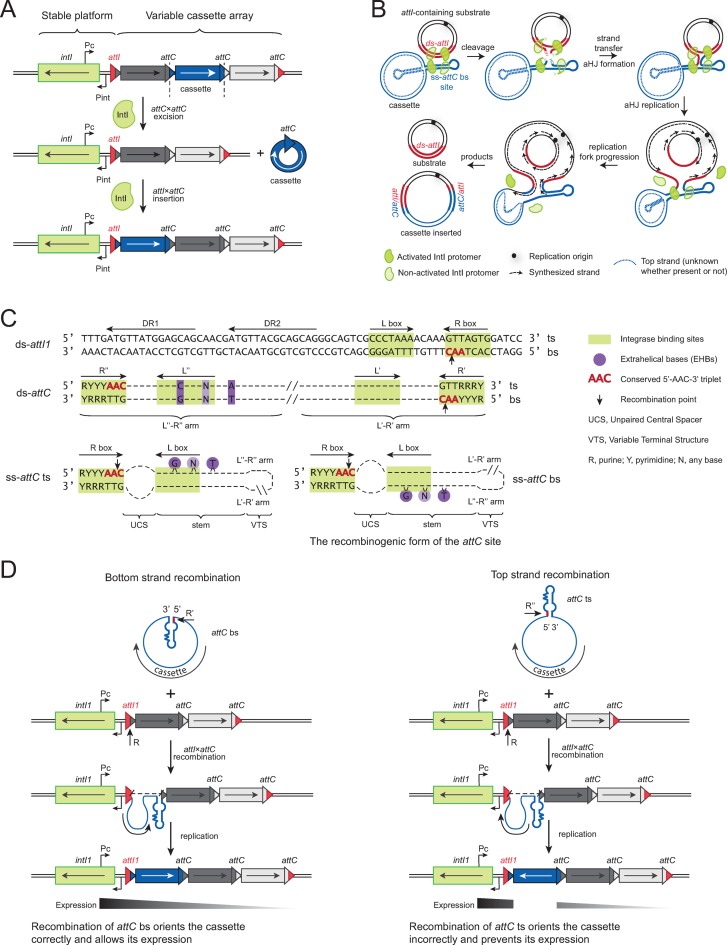Figure 1.
The integron. (A) Schematic representation of the integron. The stable platform consists of a gene coding for the integrase (intI) and its promoter Pint, a cassette promoter Pc, and an insertion site attI. Cassettes containing coding DNA sequences can be excised through an intramolecular attC×attC reaction mediated by the integrase. Circularized cassettes can be inserted through an attI×attC reaction mediated by the integrase, and constitute an array of variable size. (B) Mechanism of integron cassette insertion through recombination between ds-attI (red) and the bottom strand of ss-attC (blue). attC top strand is represented as a dotted line because the nature of the cassettes (ss or ds) is not known. After the first strand exchange an atypical Holliday junction (aHJ) is formed and further resolved through a replication step. (C) Sequence of a recombinogenic double-stranded (ds) attI1 site; schematic representation of a non-recombinogenic ds-attC site; schematic representations of a non-recombinogenic top strand (ts) and a recombinogenic bottom strand (bs) of a single-stranded (ss) attC site. Recombination occurs in the conserved 5′-AAC-3′ triplet, in the R box of the bs. (D) (Left panel) Recombination occurs in the bottom strand of the attC site (R′) and in the bottom strand of attI1, which leads to cassette insertion in correct orientation, meaning that the encoded gene can be expressed from the Pc promoter. (Right panel) Recombination occurs in the top strand of the attC site (R″) and in the bottom strand of attI1, which leads to cassette insertion in opposite orientation, meaning that the encoded gene cannot be expressed from the Pc promoter.

